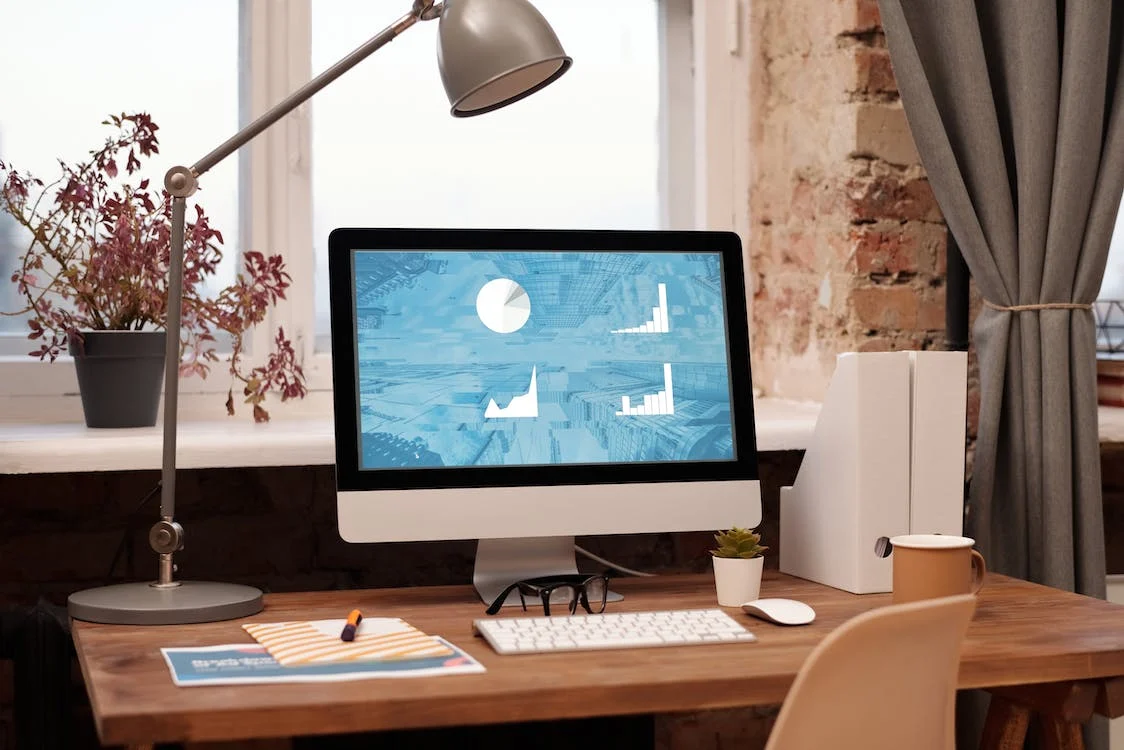Welcome to the world of working from home! With the rise of remote work and the increasing importance of work-life balance, many individuals are looking to design a home office that maximizes productivity and focus. A minimalist home office can be the key to achieving a clutter-free and calming environment that sets the stage for your most productive work.
In this article “Maximizing Productivity and Focus: Designing a Minimalist Home Office in 2024”, we will explore the relationship between home office design and productivity, provide insightful statistics on remote work and its impact on productivity, and dive into the key elements of designing a minimalist home office. We’ll also discuss the importance of choosing the right furniture and equipment, optimizing lighting and colors, creating a distraction-free environment, and implementing ergonomics for your health and well-being.
Additionally, we’ll explore the technology and tools that can enhance your workflow, and offer tips on maintaining a healthy work-life balance in your home office setup.
Ready to create a space that inspires you to do your best work? Let’s dive in!
The Relationship Between Home Office Design and Productivity
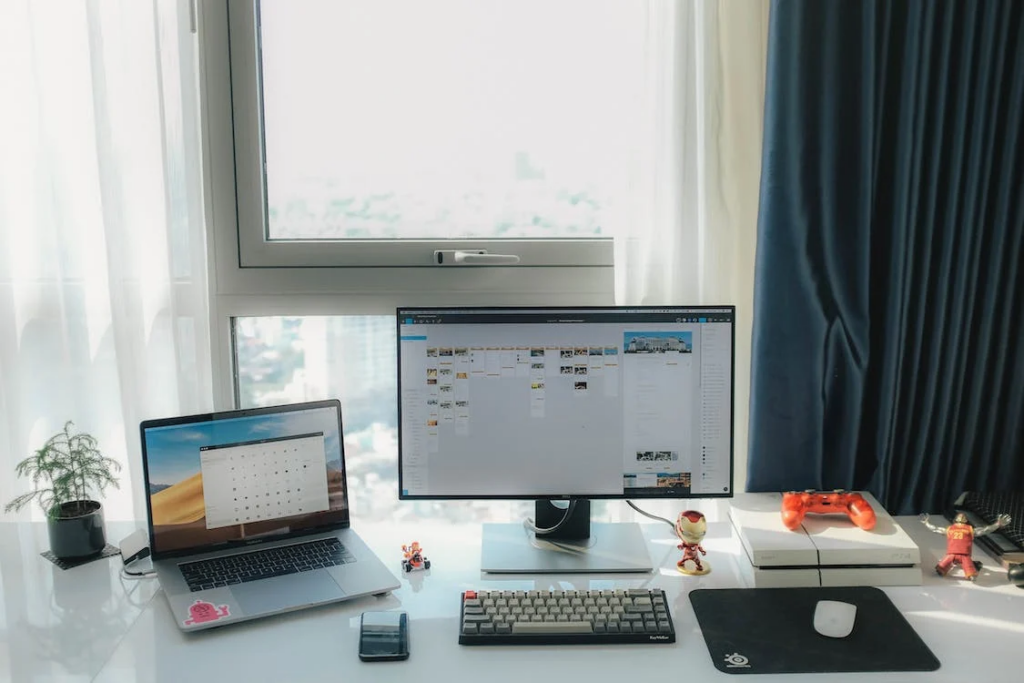
Have you ever wondered how your home office design can impact your productivity? Creating an environment that encourages focus, creativity, and efficiency is essential for maximizing your work-from-home experience. In this article, we will explore the fascinating relationship between home office design and productivity, backed by research and insights.
Study by Stanford on Remote Work
One notable study conducted by Stanford University examined the effects of remote work on productivity. Over a period of nine months, researchers studied 16,000 workers from various industries and discovered some interesting findings. The study concluded that working from home can actually increase productivity by up to 13% compared to working in a traditional office setting[1].
This research sheds light on the potential benefits of remote work when it comes to productivity. However, it’s important to note that the design and setup of your home office play a crucial role in achieving these positive outcomes.
Comparison of Fully Remote and Fully In-person Work
While working from home can provide a boost in productivity, it’s worth considering how different work environments can affect our efficiency. A comparison between fully remote work and fully in-person work can provide valuable insights.
Studies have shown that fully remote work is associated with a 10% to 20% lower productivity compared to fully in-person work[2]. This highlights the importance of finding a balance between the convenience and flexibility of working remotely and the benefits of a physical workspace.
With this knowledge in mind, it becomes clear that a well-designed home office can bridge the gap between fully remote work and fully in-person work, allowing you to reap the benefits of both worlds.
In the next sections, we will delve deeper into the key elements of home office design that can significantly impact productivity. From ergonomic furniture to proper lighting and organization, we will explore practical tips and strategies to optimize your home office space.
So, let’s dive in and discover how you can create a productive and inspiring home office environment that fuels your success.
Learn more about the benefits of working from home and how it can increase productivity here.
Statistics on Remote Work and Productivity
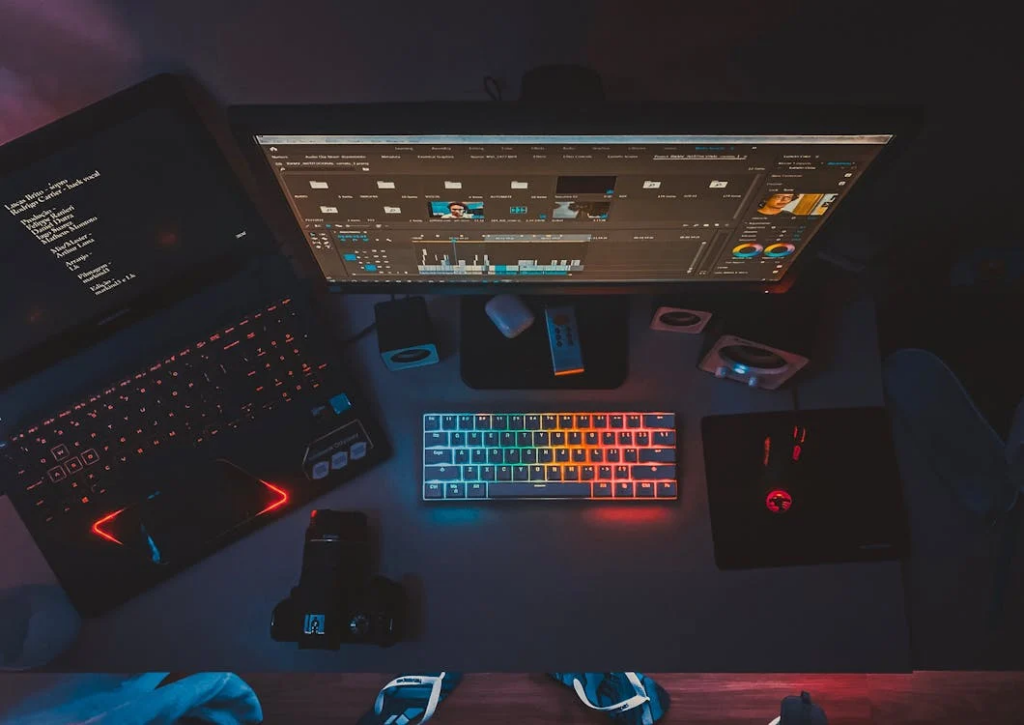
Working remotely has become increasingly popular in recent years, and the data surrounding remote work and productivity is quite fascinating. Let’s delve into some interesting statistics that shed light on this topic:
- According to recent surveys, approximately 12.7% of full-time employees work from home as of 2023[1]. This number is expected to increase in the coming years as more companies adopt flexible work arrangements.
- Contrary to popular belief, productivity levels have actually declined by 1.9% over the past two years[2]. However, this decline cannot solely be attributed to remote work, as there are various factors that contribute to productivity fluctuations in the workplace.
- While overall productivity may have seen a slight decline, studies have shown that remote work can actually increase productivity for many individuals. In fact, a whopping 77% of those who work remotely at least a few times per month reported increased productivity[3].
- Remote work is not just beneficial for individuals; it also has positive effects on their well-being. Remote workers tend to be 25% less stressed than their office counterparts[4]. This reduced stress level can have a direct impact on their productivity and overall job satisfaction.
- It’s not just about reduced stress levels—an increase in productivity is also observed among remote workers. On average, work-from-home employees are typically 13% more productive than their office-bound counterparts[4]. This increased productivity can be attributed to factors such as reduced distractions, personalized work environments, and better work-life balance.
In conclusion, while there has been a slight decline in overall productivity levels, the statistics show that remote work can have a positive impact on productivity for many individuals. The ability to work from home allows employees to create a more conducive work environment and enjoy a better work-life balance, leading to increased productivity and job satisfaction.
Read more about the benefits of remote work here
Key Elements of Designing a Minimalist Home Office
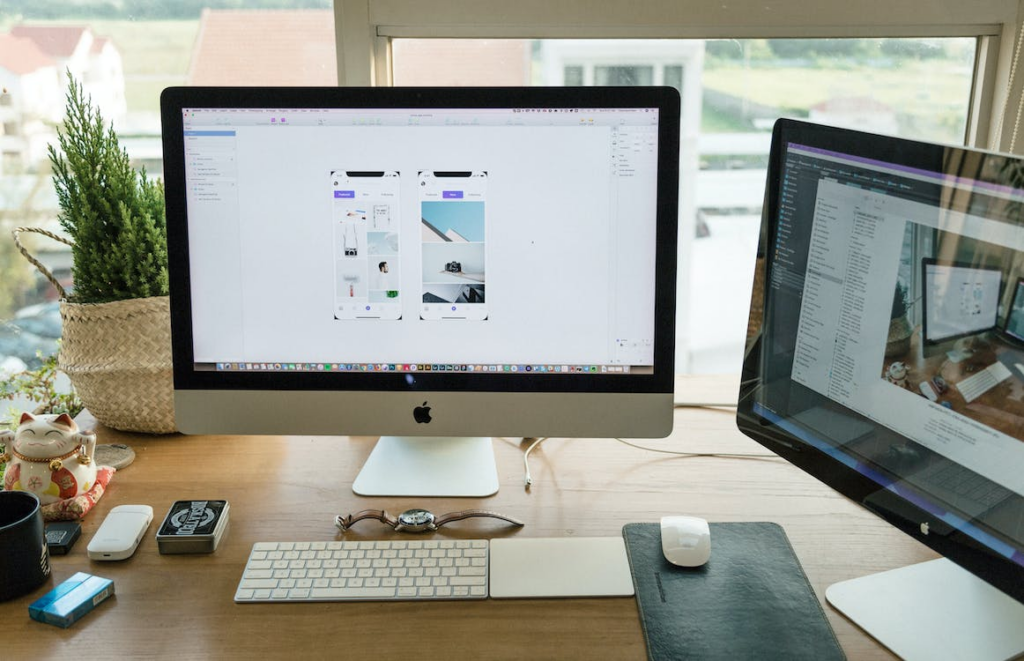
Creating a minimalist home office is not just about aesthetics; it also focuses on functionality and promoting a clutter-free workspace. Whether you’re working remotely or simply need a dedicated space for tasks, designing a minimalist home office can boost your productivity and improve your overall well-being. Here are some key elements to consider when designing your minimalist home office:
1. Declutter and Simplify
One of the foundational principles of minimalist design is to declutter and simplify your space. Before you begin setting up your home office, take some time to declutter your surroundings. Remove unnecessary items, paperwork, and distractions from your workspace. This will help create a clean and organized environment that fosters focus and productivity.
2. Optimize Storage Solutions
Minimalist design relies on effective storage solutions to keep your workspace clutter-free. Look for storage options that are sleek, functional, and blend seamlessly with the overall aesthetic of your home office. Consider using floating shelves, wall-mounted organizers, or hidden storage compartments to maximize space and keep everything neatly stored away.
3. Choose a Neutral Color Palette
When it comes to color schemes, neutral tones are essential in minimalist design. Opt for a neutral color palette such as whites, grays, and earth tones to create a calm and soothing atmosphere in your home office. These colors also help promote focus and clarity, allowing your mind to stay centered on the tasks at hand.
4. Invest in Quality Furniture
Investing in high-quality, ergonomic furniture is crucial for a minimalist home office. Look for pieces that are functional, comfortable, and visually appealing. Choose a desk with clean lines and ample workspace, along with a comfortable chair that provides proper support for long hours of work. Remember, simplicity and functionality are key when selecting furniture for your minimalist home office.
5. Let Natural Light In
Natural light can have a significant impact on your productivity and well-being. Aim to position your home office in a space that receives plenty of natural light. Keep your windows unobstructed and consider using sheer curtains or blinds to control the amount of light entering the room. Incorporating natural light into your workspace can enhance your mood, reduce eye strain, and improve your overall work experience.
6. Integrate Greenery
Bringing nature into your minimalist home office can help create a calming and inspiring environment. Integrate indoor plants or succulents to add a touch of greenery and freshness to your workspace. Not only do plants improve indoor air quality, but they also provide a sense of tranquility and connection with nature.
Incorporating these key elements into your minimalist home office will help you create a space that is both functional and visually appealing. Remember, the goal is to create a calm and clutter-free environment that promotes focus and enhances productivity. So, declutter, simplify, and design a minimalist home office that suits your needs and reflects your personal style.
Related: Looking for some inspiration? Check out these minimalist home office ideas for more design tips and ideas.
Choosing the Right Furniture and Equipment

When it comes to setting up a space, whether it’s a home office or a commercial workspace, choosing the right furniture and equipment is essential. Not only do you need items that are functional and comfortable, but they also need to be visually appealing and conducive to productivity.
Here are some key factors to consider when selecting furniture and equipment for your space:
Comfort and Ergonomics
Perhaps one of the most crucial aspects to think about is comfort. After all, you’ll likely be spending several hours sitting and working in your space, so it’s essential to invest in furniture that prioritizes comfort and supports good posture. Look for chairs with adjustable height and lumbar support, as well as desks that allow for optimal positioning of your keyboard and monitor.
Functionality and Storage
Another important consideration is functionality. Think about the specific needs of your work and how the furniture and equipment will help you meet those needs. Do you require ample storage space for documents and supplies? Would a desk with built-in cable management be beneficial? Assessing your requirements will help you choose items that enhance your workflow.
Aesthetics and Style
While functionality and comfort are crucial, aesthetics should not be overlooked. Your workspace should be visually appealing and reflective of your personal style or brand identity. Consider the overall design theme or color scheme you want to achieve and select furniture and equipment that complements it. This will contribute to a more inspiring and enjoyable work environment.
Quality and Durability
Investing in high-quality furniture and equipment is always a wise decision. While it may come at a higher upfront cost, durable items will last longer and provide better value for money in the long run. Look for solid construction, sturdy materials, and reputable brands or manufacturers known for their reliability. This will ensure that your furniture and equipment can withstand daily use without wearing out quickly.
Remember, it’s essential to choose furniture and equipment that meets your specific needs and preferences. Take the time to research different options, read reviews, and even visit local furniture stores to test out items before making a final decision.
By prioritizing comfort, functionality, aesthetics, and quality, you’ll be well on your way to creating a productive and visually appealing workspace that inspires you to do your best work.
Optimizing Lighting and Colors
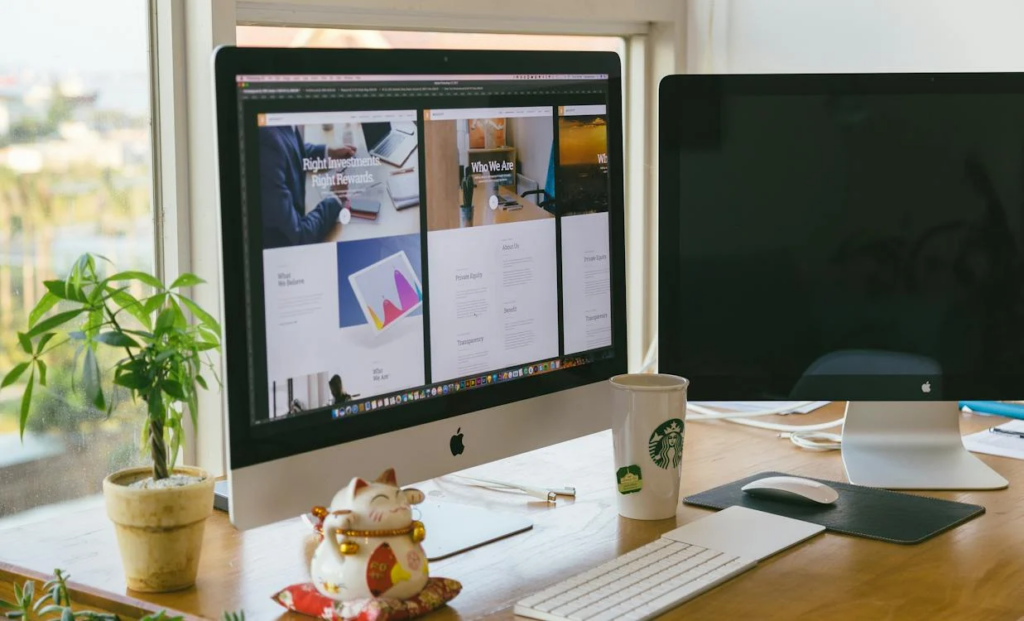
Have you ever walked into a room and instantly felt a sense of calm or excitement? Chances are, the lighting and colors in that space played a significant role in shaping your emotions. We often underestimate the impact that lighting and colors can have on our mood and overall well-being. Whether you’re designing a home, an office, or even a website, optimizing lighting and colors can make a world of difference.
The Power of Lighting
Lighting is more than just a way to see in the dark. It has the power to transform a space and set the mood. Here are a few tips on how to optimize lighting to create the desired effect:
- Natural Light: Whenever possible, make use of natural light. It not only provides a sense of warmth and openness but also boosts productivity and mood. Arrange furniture and workstations in a way that maximizes exposure to natural light.
- Task Lighting: Consider the specific activities that will take place in a room and provide appropriate task lighting. Dimmable desk lamps, under-cabinet lights in the kitchen, or reading lights next to a cozy chair can improve functionality and create a pleasant atmosphere.
- Ambient Lighting: Ambience is all about creating a cozy and inviting atmosphere. Soft and diffused light sources like pendant lights or wall sconces can help achieve this effect. The goal is to create a warm and welcoming space for relaxation or socializing.
The Psychology of Colors
Colors have the power to evoke certain emotions and trigger specific responses. Understanding color psychology can help you optimize the use of colors in your spaces. Here are a few examples:
- Blue: Blue is associated with calmness, trust, and stability. It’s a great choice for bedrooms, offices, or any space where you want to promote relaxation and focus.
- Yellow: Yellow is energetic and uplifting. It can spark feelings of happiness and creativity. Consider using yellow accents in areas where you want to inspire positive energy and enthusiasm.
- Green: Green is often associated with nature, growth, and balance. It has a calming effect and can be used in spaces where you want to promote harmony and tranquility.
- Red: Red is a bold and intense color that can stimulate energy and excitement. It’s a great choice for areas where you want to encourage passion and intensity, such as dining rooms or entertainment spaces.
By understanding the psychology of colors and using them strategically, you can create spaces that evoke the desired emotions and enhance the overall experience.
The Balance of Lighting and Colors
When it comes to optimizing lighting and colors, it’s important to find the right balance. Here are a few tips to keep in mind:
- Contrast: Use contrasting colors and lighting to create visual interest and depth in a space. The interplay between light and dark, warm and cool tones can add dimension and make a room more visually appealing.
- Layering: Don’t rely on a single light source or color. Instead, use a combination of ambient, task, and accent lighting, along with a variety of colors, to create layers of light and depth.
- Test and Adjust: Lighting and color choices can vary depending on the specific space and its purpose. Don’t be afraid to experiment and make adjustments as needed. Pay attention to how the lighting and colors make you feel and make adjustments accordingly.
Optimizing lighting and colors is more than just a design choice. It’s about creating spaces that enhance our well-being and evoke the desired emotions. By understanding the power of lighting and colors and making thoughtful choices, we can transform our spaces into places that truly bring joy and inspiration. Remember, it’s not just about what we see, but how it makes us feel.
Also Read: Creating a Zen Workspace: Design Ideas for a Minimalist Home Office in 2024.
Creating a Distraction-Free Environment
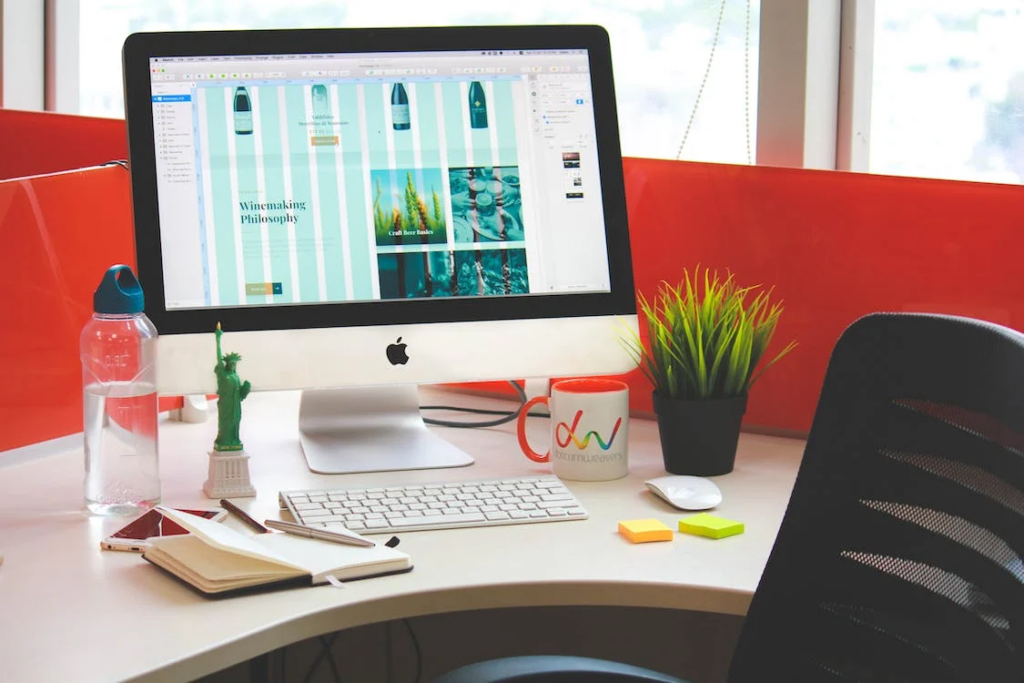
We live in a world filled with distractions. From the ping of notifications on our smartphones to the constant buzz of social media, it can feel like our attention is constantly being pulled in a million different directions. This constant barrage of distractions can make it challenging to focus on the task at hand, whether it’s studying for an exam, finishing a work project, or even just enjoying a quiet moment of relaxation.
Creating a distraction-free environment is key to increasing productivity, reducing stress, and finding a sense of calm and clarity in our lives. By minimizing distractions and cultivating a space that supports focus and concentration, we can significantly improve our ability to stay on track and accomplish our goals.
So, how can we create a distraction-free environment? Here are a few practical strategies to help you get started:
- Designate a dedicated workspace: Having a designated area for work or study can help train your brain to focus when you’re in that space. Whether it’s a home office, a corner of your bedroom, or even a coffee shop, having a consistent environment for focused work can make a world of difference.
- Eliminate visual clutter: A cluttered physical environment can fuel a cluttered mind. Take some time to declutter and organize your workspace. Remove any unnecessary items or distractions that might divert your attention. Keep only the essentials within reach, and create a clear, clean space that promotes calm and focus.
- Minimize digital distractions: Our devices can be both a blessing and a curse when it comes to staying focused. To create a distraction-free environment, consider implementing the following strategies:
- Silence notifications: Turn off unnecessary notifications on your phone, computer, and other devices. Only allow alerts for essential communications or time-sensitive tasks.
- Use website blockers: If you find yourself easily tempted by social media or other distracting websites, consider using website blockers or productivity apps that limit access during specific times or when you need to concentrate.
- Set boundaries: Establish boundaries for when you will and won’t use your devices. Designate specific times for checking emails, scrolling through social media, or engaging in other non-essential activities. Stick to these boundaries to maintain focus and avoid getting caught up in digital distractions.
Create a routine: Establishing a regular routine can help train your brain to enter a focused state more easily. Set specific times each day for focused work or study, and make it a habit to dedicate those periods to your most critical tasks. Having a predictable routine can help you anticipate and ward off potential distractions, allowing you to stay on track.
Remember, creating a distraction-free environment is an ongoing process. It requires consistent effort and a commitment to managing the distractions that come your way. By implementing these strategies and making them part of your daily routine, you can create a space that supports focus, productivity, and overall well-being. So, take a deep breath, remove those distractions, and get ready to embark on a more focused and fulfilling journey.
Organizing and Decluttering

Welcome to the world of organizing and decluttering! If you’re feeling overwhelmed by the chaos in your living space or struggling to find things when you need them, it’s time to take control and create a well-organized environment that will bring you peace and efficiency.
The Benefits of Organizing and Decluttering
Why should you invest your time and energy into organizing and decluttering? Here are some compelling reasons:
- Enhanced Productivity: When everything has a designated place, you can find what you need quickly and easily, saving you time and reducing stress.
- Reduced Stress: Clutter and disorganization can create anxiety and make it difficult to relax. By decluttering and organizing your space, you’ll create a calm and peaceful environment.
- Improved Focus: A clear and organized space allows you to concentrate better on the task at hand, whether it’s work, studying, or hobbies.
- Maximized Space: By decluttering and organizing, you can make the most of your available space, creating room for new items and preventing a cramped and cluttered living area.
- Streamlined Routine: An organized space allows for a smooth daily routine. Imagine easily finding your keys, wallet, or favorite coffee mug each morning without any stress or frustration.
How to Start Organizing and Decluttering
Now that you’re convinced of the benefits of organizing and decluttering, it’s time to roll up your sleeves and get to work. Follow these steps to kickstart your organization journey:
- Set Clear Goals: Determine what you want to achieve and create a plan. This could be decluttering a specific room, organizing your wardrobe, or establishing a system for managing paperwork.
- Sort and Purge: Start by decluttering. Go through your belongings and decide what to keep, donate, or discard. Remember, less is more!
- Create Zones: Set up designated areas for different items. For example, create a zone in your kitchen for cooking supplies and another for baking tools.
- Invest in Storage Solutions: Utilize storage bins, baskets, shelves, and organizers to maintain a tidy and organized space. This will help you categorize and store items efficiently.
- Establish Regular Maintenance: Create a habit of maintaining your organizational systems. Spend a few minutes each day tidying up and putting things back in their designated spots.
Remember, organizing and decluttering is a journey, not an end goal. Take it one step at a time, and enjoy the process of creating a harmonious and functional space.
Ready to get started? Check out our article on 5 Essential Tips for Decluttering Your Home for practical advice to declutter your living space effectively.
Ergonomics for Health and Well-being

In today’s fast-paced world, where we spend long hours working at desks and using technology, it’s crucial to prioritize our health and well-being. One aspect that often goes unnoticed but plays a significant role in our overall wellness is ergonomics. So, what exactly is ergonomics, and how does it impact our health? Let’s dive in and explore the fascinating world of ergonomics.
Understanding Ergonomics
Ergonomics is the science of designing and arranging products, systems, and environments to fit the people who use them. It aims to optimize the interaction between humans and their working or living environments. The main goal of ergonomics is to enhance efficiency, productivity, comfort, and most importantly, prevent injuries and promote overall well-being.
The Importance of Ergonomics for Health
Proper ergonomic principles can have a profound impact on our health and well-being, both in the workplace and at home. Here are some key reasons why ergonomics is crucial for our overall health:
- Injury Prevention: Poor ergonomics can lead to a range of musculoskeletal disorders and injuries, such as back pain, neck strain, carpal tunnel syndrome, and eye strain. By incorporating ergonomic principles into our daily activities, we can minimize the risk of these injuries and reduce the associated discomfort.
- Enhanced Comfort: Ergonomics focuses on creating comfortable and supportive environments. By using ergonomic furniture, equipment, and tools, we can improve our posture, reduce fatigue, and alleviate body strain. This, in turn, enhances our comfort and makes our daily tasks much more enjoyable.
- Increased Productivity: When we are in a well-designed ergonomic environment, we can work more efficiently and effectively. Ergonomic equipment, such as adjustable desks and chairs, allows us to find the most comfortable positions for our bodies, leading to improved focus, concentration, and productivity.
- Mental Well-being: Ergonomics not only addresses physical health but also promotes mental well-being. A comfortable and ergonomically optimized workspace contributes to reduced stress levels, increased job satisfaction, and overall mental wellness.
Incorporating Ergonomics into Your Life
Now that we understand the importance of ergonomics for our health and well-being, here are some practical ways to incorporate it into our daily lives:
- Workspace: Adjust your desk, chair, and computer monitor to ensure proper posture and alignment. Use ergonomic accessories like wrist rests and footrests to support your body.
- Lighting: Optimize the lighting in your workspace to reduce eye strain. Use natural light whenever possible and supplement it with task lighting to avoid glare.
- Movement: Take regular breaks to stretch and move around, especially if you have a sedentary job. Incorporate exercises like stretching, walking, and yoga to promote blood circulation and reduce muscle stiffness.
- Technology Use: Practice good ergonomic habits while using technology devices. Maintain a neutral wrist and neck position while typing on a keyboard or using a smartphone.
Remember, ergonomics is not a one-size-fits-all solution. It’s essential to personalize your workspace and daily activities based on your unique needs and preferences. By prioritizing ergonomics, you can create a healthier, more comfortable, and productive environment for yourself, ultimately leading to a better quality of life.
To learn more about the benefits of ergonomics and how to implement it in your everyday life, visit the Ergonomics for Health and Well-being resource.
Technology and Tools for Seamless Workflow

In today’s fast-paced and interconnected world, it’s crucial to have the right technology and tools to help us streamline our workflow. Whether you’re working on a team project or managing your own tasks, the right tools can make all the difference in boosting productivity and ensuring seamless collaboration. From project management platforms to communication tools, here are some essential technologies that can revolutionize your workflow:
Project Management Platforms
Keeping track of project timelines, tasks, and deadlines can be overwhelming, especially when working on complex projects with multiple team members. That’s where project management platforms come in handy. These platforms provide a central hub where you can create and assign tasks, set due dates, and monitor progress. Some popular project management platforms include:
- Trello: Trello is a visual collaboration tool that allows you to create boards and lists to organize your projects. You can add tasks, assign them to team members, and track their progress in a simple and intuitive interface.
- Asana: Asana is another powerful project management tool that helps you keep all your tasks and deadlines in one place. It provides features like timelines, Gantt charts, and team collaboration to ensure efficient project execution.
- Jira: Jira is a widely used project management tool, especially in software development teams. It allows you to track and manage tasks, report and resolve bugs, and prioritize work effectively.
Communication and Collaboration Tools
Efficient communication is the backbone of any successful team or workflow. Having the right communication tools in place ensures that team members can stay connected, share information, and collaborate seamlessly, no matter where they are. Some popular communication and collaboration tools include:
- Slack: Slack is a real-time messaging and collaboration platform that enables team members to communicate instantly through channels and direct messages. It integrates with various apps and services, allowing you to streamline communication and centralize information.
- Microsoft Teams: Microsoft Teams is a comprehensive communication and collaboration platform that combines chat, video meetings, file storage, and app integration. It provides a unified workspace for teams to communicate and collaborate effectively.
- Zoom: Zoom is a video conferencing tool that enables teams to have virtual meetings, webinars, and screen sharing. It offers a reliable and user-friendly interface for remote collaboration and communication.
By leveraging the power of project management platforms and communication tools, you can break down silos, enhance collaboration, and ensure a smooth workflow. These technologies streamline processes, improve efficiency, and help teams achieve their goals with ease.
“The right technology and tools can make all the difference in boosting productivity and ensuring seamless collaboration.”
Maintaining Work-Life Balance
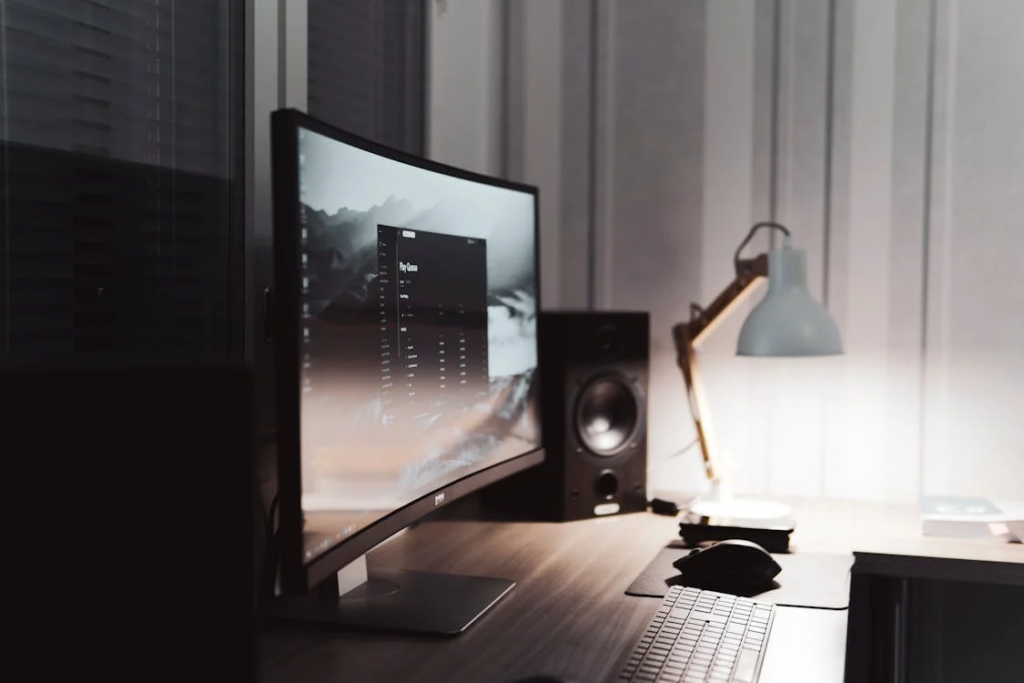
In today’s fast-paced world, finding a balance between work and personal life can feel like an elusive concept. With the constant demands of work, family, and other responsibilities, it’s easy to feel overwhelmed and stretched thin. However, maintaining a healthy work-life balance is essential for overall well-being and long-term success.
The Importance of Work-Life Balance
Achieving work-life balance is not just a buzzword; it is crucial for several reasons:
- Mental and Emotional Well-being: Persistent work-related stress can take a toll on mental and emotional health, leading to burnout, anxiety, and depression. Balancing work and personal life allows for adequate rest and rejuvenation, helping to maintain good mental and emotional well-being.
- Quality Relationships: Neglecting personal relationships can strain them and lead to feelings of isolation. By carving out time for loved ones and fostering meaningful connections, work-life balance strengthens relationships and enhances overall happiness.
- Increased Productivity: Paradoxically, spending more time working doesn’t necessarily equate to increased productivity. Overworking often leads to diminished effectiveness, while taking regular breaks and having time for personal pursuits can improve focus, creativity, and efficiency.
Strategies for Maintaining Work-Life Balance
Maintaining work-life balance requires conscious effort and a commitment to prioritize personal well-being alongside professional responsibilities. Here are some practical strategies that can help:
- Set Boundaries: Establish clear boundaries between work and personal life to prevent work from encroaching on your personal time. This includes defining specific working hours and sticking to them, avoiding checking work emails or messages outside of those hours, and communicating your boundaries effectively with colleagues and superiors.
- Delegate and Prioritize: Learn to delegate tasks and share responsibilities at work. Prioritize tasks based on urgency and importance, focusing on high-impact activities rather than getting caught up in busywork. This allows for more efficient time management and reduces work-related stress.
- Practice Self-Care: Make self-care a non-negotiable part of your routine. This could involve activities such as exercise, meditation, hobbies, spending time with loved ones, or simply taking breaks to recharge throughout the day. Taking care of your physical, mental, and emotional well-being is crucial for maintaining a healthy work-life balance.
- Utilize Technology Smartly: While technology has made work more accessible, it’s important to use it smartly to maintain boundaries. Set designated times for checking emails and notifications, and resist the urge to constantly be connected. Disconnecting from technology during personal time allows for better present-moment experiences and prevents work from dominating your life.
Remember, achieving work-life balance is an ongoing process that requires conscious effort and adaptability. It’s not always about dividing time equally between work and personal life, but rather finding a harmonious integration that allows for personal well-being and professional success.
As American author and entrepreneur Jim Rohn said, “Take care of your body. It’s the only place you have to live.” Prioritizing work-life balance is an investment in your overall happiness, health, and long-term success. So, take the first step today and start consciously creating a fulfilling and balanced life.
Also Read: Creating a Minimalist Home Office in 2024 : Boosting Productivity and Focus.
Conclusion
In conclusion, designing a minimalist home office can have a significant impact on maximizing productivity and focus. By implementing key elements of minimalism, choosing the right furniture and equipment, optimizing lighting and colors, creating a distraction-free environment, organizing and decluttering, considering ergonomics, and utilizing technology and tools for a seamless workflow, you can create an ideal workspace that promotes efficiency and well-being.
Remember, maintaining a work-life balance is crucial, even in a home office setting. Take breaks, set boundaries, and prioritize self-care to ensure that you don’t burn out. With the right design and mindset, your minimalist home office can become a sanctuary of productivity and inspiration.
If you’re looking for guidance and inspiration on creating a minimalist home office, be sure to check out Minimalist Home Guru. They specialize in helping new home buyers achieve a minimalist aesthetic, offering advice on decluttering, selecting clean-lined furniture, and creating a calming and clutter-free living space. Visit their website here to explore all the valuable resources they have to offer.
For more articles on home office or workspace, read Designing a Functional and Stylish Home Office : Ideas for Homeowners in 2023. Happy Designing!!
Frequently Asked Questions
- What are the benefits of designing a minimalist home office?
Designing a minimalist home office helps in maximizing productivity and focus by reducing distractions, promoting a clean and clutter-free environment, and creating a calming atmosphere that enhances creativity and concentration. - What are some essential elements of a minimalist home office design?
Some essential elements of a minimalist home office design include a simple and uncluttered desk, ergonomic furniture, ample natural lighting, neutral color schemes, and efficient storage solutions. - How can I reduce distractions in my minimalist home office?
To reduce distractions in your minimalist home office, you can minimize visual clutter, keep unnecessary items out of sight, create a designated workspace, implement soundproofing techniques, and use noise-canceling headphones if necessary. - How can I create a productive and inspiring atmosphere in my home office?
To create a productive and inspiring atmosphere in your home office, you can incorporate motivational quotes or artwork, introduce plants for freshness, personalize the space with meaningful objects, and ensure proper ventilation and air quality. - How can I optimize my minimalist home office for better focus?
To optimize your minimalist home office for better focus, you can establish a daily routine, utilize task management tools, set clear goals and deadlines, eliminate digital distractions, and create a comfortable and ergonomic workspace.

